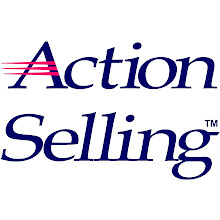The greatest hidden asset in any company is the untapped potential of its sales force. The best investment opportunity available to any company, or salesperson, is to unlock that potential. How many other investments can show a documented ROI of more than 3:1 in 90 days and 14:1 in the first year?
Naturally, you don’t get results like that from just any sales training course. Just as there are right ways and wrong ways to sell, there are right and wrong ways to teach people how to sell more effectively.
How can $1 of sales training return $14 worth of better sales performance?
For sales training to unlock the true potential of a sales force and optimize benefits to a company’s bottom line, three things are required. They should always be present in any sales-training situation, but rarely are.
1. Teach a sales system that is genuinely more effective than what salespeople are doing now. This should be obvious, but it isn’t. Many courses teach selling as a collection of tips, tricks and techniques that might be helpful in various circumstances. Maybe they’ll boost sales, maybe not.
To achieve dramatic gains in performance, salespeople need to master a systematic and superior approach to selling that has proven to work consistently in virtually any circumstances. Tricks and gimmicks won’t cut it. Salespeople need a better way to sell.
The system must be based on the way buyers actually behave and make decisions. And salespeople need to know not just what the system is but how to execute it—every step of the way. That’s why we “Certify” salespeople on Action Selling skills.
2. Teach skills that can be taught. A thousand traits and characteristics may contribute in some way to sales success: an outgoing personality, the gift of gab, etc. The trouble is, those traits can be talked about (and often are in training courses) but they can’t really be taught.
Action Selling concentrates on five key skills. Research proves that improvements in those skills translate directly into greater sales performance. They can be taught and improvements in them can be measured. They are: Understanding the Buyer/Seller Relationship; Sales Call Planning; Questioning Skills; Presentation Skills; and Gaining Commitment.
We will talk more in the next article about those five skills and why they are so critical to unlocking actual potential to achieve measurable gains in sales performance.
3. Train according to the realities of adult learning and behavioral reinforcement. Educational research has established a great deal about how adults actually learn and master new skills. Salespeople learn far more effectively when sales training adheres to proven adult learning principles.
But teaching new skills is only half the battle. Sales performance can’t improve unless salespeople actually use their new skills consistently on the job. Old habits die hard.
What to teach and how to teach it are important issues. But, “How will we reinforce the new behavior on the job?” is critical. Reinforcement must be an integral part of the training plan, right from the beginning.
Select the right system, based on the right skills, then get the teaching and reinforcement right. You’ll have taken a huge step toward making sales training pay. What else is required? Stay tuned for the next article.
Action Selling In ActionA major automotive parts distributor decided to train and certify its 1,200+ North American salespeople and sales managers in the Action Selling system. But the organization also wanted to know exactly what kind of financial return it was getting for its training investment.
The company split its sales force into two groups, carefully matching them to eliminate regional differences and other factors that might affect sales results. One group was trained and certified in Action Selling prior to the company’s third financial quarter in 2005. The other (control) group was trained after the third quarter. This ensured that training was the only factor that could explain any difference in sales performance between the two groups.
At the end of the third quarter, sales revenue and gross profit for each group were compared with third-quarter figures from the previous year.
Results: In the first quarter following the training, the Action Selling group posted sales increases $7,631,367 higher that the untrained group. The increase in gross profits was $2,442,037 higher. Conservative projections showed that at the one-year mark, the ROI from Action Selling would be a staggering 1,383%--a return of 14:1! The company and its salespeople will make a lot more money as a result of Action Selling training.
For
sales training that makes money, contact The Sales Board at (800) 232-3485.
Download the White Paper that describes this company's experience with Action Selling and its ROI gain.
